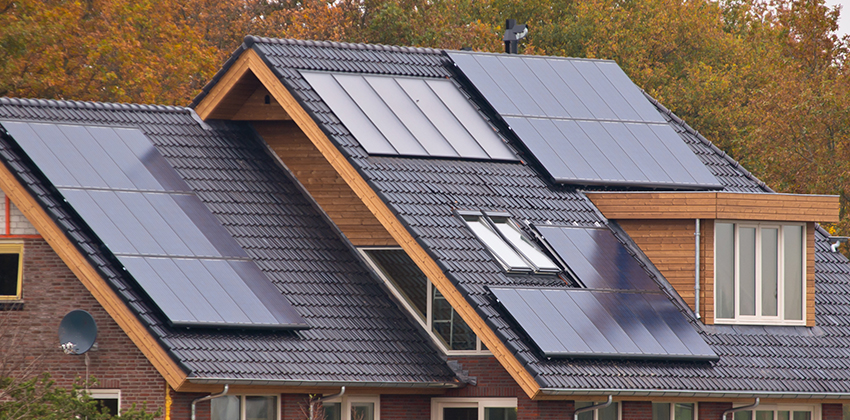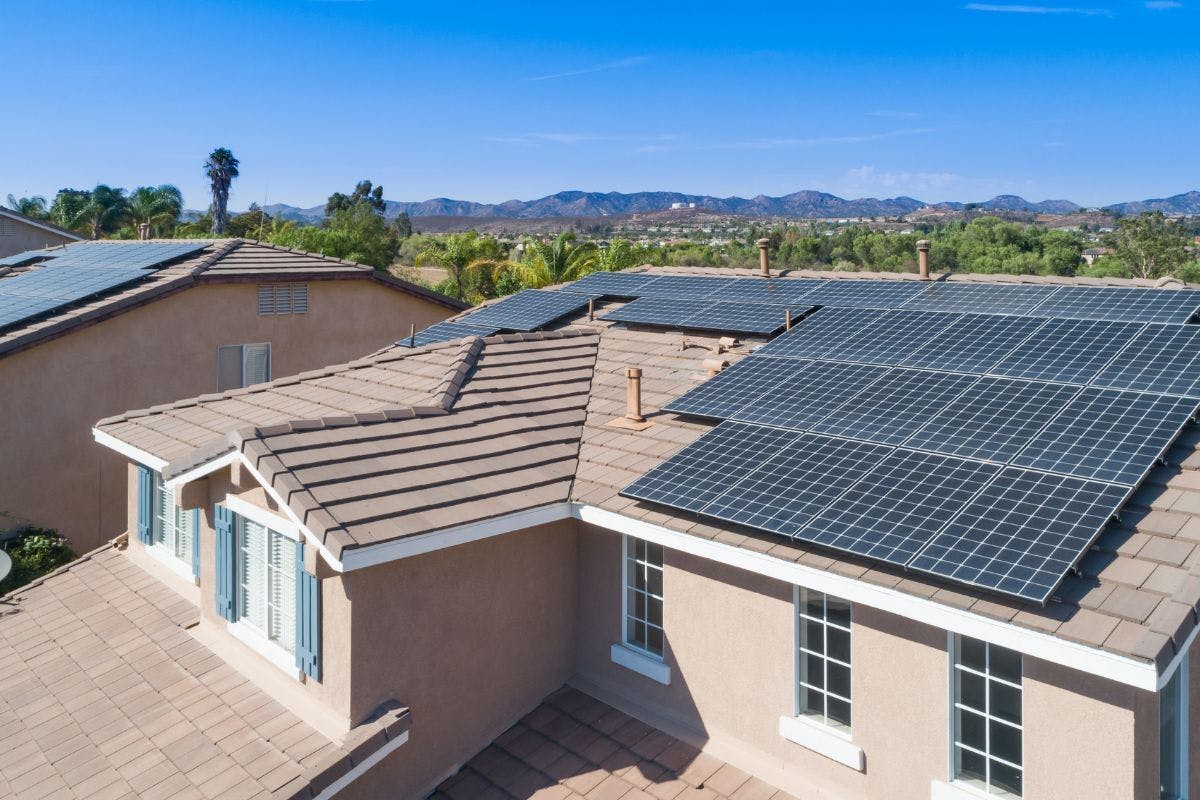Solar Panels Performance and How They Hold Up Over Decades of Years
Discovering the Different Kinds Of Solar Panels and Their One-of-a-kind Advantages
The landscape of solar panels provides different alternatives, each with unique advantages matched to different applications. Monocrystalline panels stick out for their efficiency and visual appeals, while polycrystalline designs interest budget-conscious consumers. Thin-film innovation supplies adaptability in installment. Cutting-edge layouts like bifacial and building-integrated photovoltaics even more improve the charm of solar power. Comprehending these distinctions is essential for making informed decisions. The question remains: which type will best meet particular power demands?
Monocrystalline Solar Panels
Numerous kinds of solar panels are offered, monocrystalline solar panels are typically concerned as the most efficient alternative. These panels are made from a solitary crystal structure, generally silicon, which allows them to transform sunshine into electrical power better than various other types. The efficiency prices for monocrystalline panels can vary from 15% to over 22%, making them a popular selection for commercial and household installments where area is limited.

Polycrystalline Solar Panels
Polycrystalline solar panels are created utilizing an unique manufacturing process that involves melting multiple silicon crystals with each other. This approach can bring about advantages such as lower production costs, making them a preferred selection for several customers. Nevertheless, their effectiveness and performance elements may differ contrasted to other kinds of solar panels, calling for cautious consideration.
Manufacturing Refine Advantages
The production process of polycrystalline solar panels provides several benefits that contribute to their allure in the renewable resource field. The production makes use of silicon scrap, which minimizes waste and lowers product expenses, making it economically sensible. Unlike monocrystalline panels, the manufacturing of polycrystalline panels entails easier and less energy-intensive strategies, leading to a smaller carbon impact. Furthermore, the casting procedure enables for the creation of numerous cells simultaneously, boosting effectiveness in manufacturing. This technique likewise causes an extra consistent framework, which can enhance the overall performance and long life of the panels. Consequently, polycrystalline solar panels offer a cost-effective remedy for customers while advertising sustainable production practices within the market.
Performance and Efficiency Variables
Exactly how do effectiveness and efficiency variables influence the efficiency of polycrystalline photovoltaic panels? These panels generally display reduced performance rates, averaging around 15-20%, compared to their monocrystalline equivalents. Factors such as temperature level of sensitivity, shielding, and the angle of installation substantially impact their efficiency. Polycrystalline panels have a tendency to carry out much better in cooler environments yet might struggle in heats, leading to minimized outcome. In addition, their efficiency can be influenced by dirt and particles buildup, demanding normal upkeep. Regardless of these obstacles, polycrystalline panels are more affordable and offer a strong balance in between price and efficiency. Understanding these effectiveness and performance factors is vital for customers looking for to take full advantage of solar power production and general system effectiveness.
Thin-Film Solar Panels
Thin-film solar panels represent a versatile and light-weight choice in the solar power landscape. These panels are created by transferring several slim layers of solar material onto a substratum, which can include glass, plastic, or steel. This manufacturing procedure enables better versatility in design and applications contrasted to conventional crystalline photovoltaic panels.
Thin-film modern technology usually features reduced efficiency prices, but it makes up for this with reduced manufacturing costs and improved efficiency in low-light problems. Their lightweight nature makes them ideal for installation on diverse surfaces, consisting of bent frameworks and vehicles. Additionally, these panels can be integrated into structure products, providing visual benefits along with energy generation.
Bifacial Solar Panels
Bifacial solar panels are getting interest for their enhanced efficiency and efficiency, as they can catch sunlight from both sides. This dual-sided layout permits boosted energy production, specifically in reflective atmospheres. Furthermore, their installation offers possible expense benefits, making them an eye-catching alternative for numerous applications.
Effectiveness and Performance
The performance and efficiency of solar panels are necessary variables in establishing their performance in power generation, with bifacial solar panels attracting attention for their cutting-edge layout. These panels include solar batteries on both sides, allowing them to catch sunshine from numerous angles. This dual-sided capability boosts energy outcome, particularly in atmospheres with reflective surface areas, such as snow or sand. Bifacial solar panels can increase energy production by 10-20% compared to typical monofacial panels. Their ability to harness indirect sunlight adds to their general efficiency, making them a compelling selection for numerous applications. Advancements in modern technology continue to boost their performance metrics, strengthening their location in the eco-friendly energy landscape as a very effective solution for solar energy generation.
installation and Price Benefits
When taking into consideration the advantages of bifacial photovoltaic panels, the installation process and price benefits are substantial elements that can affect decision-making for both domestic and business applications. Bifacial panels can be mounted on different frameworks, consisting of rooftops and ground installments, allowing for functional release. Their ability to absorb sunshine from both sides boosts power generation without requiring additional panels. This efficiency can cause lowered total installation costs, as fewer systems might be needed to achieve preferred power outputs. Furthermore, their durability commonly converts to lower maintenance expenses gradually (Solar Company). Consequently, the long-term financial benefits, combined with installation flexibility, make bifacial solar panels an appealing option for those seeking sustainable energy services
Building-Integrated Photovoltaics (BIPV)
Building-Integrated Photovoltaics (BIPV) represent a considerable development in solar innovation, effortlessly including solar batteries right into building products such as home windows, facades, and roofing systems. This innovative approach not only generates renewable resource however also improves the appearances and capability of structures. BIPV systems can change traditional building materials, lowering the total expense of building while adding to power performance.
The combination of solar technology right into architectural layout enables better room usage, as these systems can be installed without needing additional land. In enhancement, BIPV solutions are adjustable, enabling designers to create special designs that match the structure's general look. The dual capability of BIPV-- serving both as a power generator and a structural part-- uses significant advantages in city atmospheres where room is limited. As understanding of lasting structure practices expands, BIPV is becoming a progressively eye-catching option for home owners and designers alike.
Concentrated Photovoltaic (CPV) Equipments
Concentrated Photovoltaic (CPV) systems represent a sophisticated solar innovation that makes use of lenses or mirrors to focus sunlight onto high-efficiency solar cells. This ingenious approach enables for the collection of significantly even more solar energy than traditional photovoltaic or pv systems. By concentrating sunlight, CPV systems can achieve greater effectiveness, often surpassing 40%, making them especially appropriate for locations with high straight sunshine.
In addition, CPV systems typically require less land area compared to conventional solar panels, as they generate more power from a smaller sized impact. These systems often incorporate tracking devices that readjust the placement of the lenses or mirrors to adhere to the sunlight's activity, making the most of energy capture throughout the day. CPV modern technology is finest fit for particular geographic areas, where direct sunlight is official site abundant, restricting its applicability in areas with regular cloud cover - Solar Company. Generally, CPV systems present a promising alternative for improving solar power manufacturing in optimal environments
Contrast of Solar Panel Efficiency and Expense
Different solar panel innovations exist, their performance and cost can considerably differ, influencing consumer options and market characteristics. The most usual kinds-- thin-film, monocrystalline, and polycrystalline-- exhibit distinctive qualities in performance and pricing. Monocrystalline panels tend to provide the highest possible efficiency rates, frequently exceeding 20%, however they typically feature a higher price. In contrast, polycrystalline panels are generally extra economical, with efficiencies around 15-20%, making them a preferred choice for budget-conscious customers. Thin-film innovations, while much less efficient at roughly 10-12%, give versatility and reduced installation costs, interesting particular applications.
Inevitably, picking the best photovoltaic panel entails weighing the balance in between effectiveness and expense. Customers should consider their power needs, budget plan constraints, and long-term savings possibility, as these aspects will dictate the ideal option for their solar power system.
Frequently Asked Questions
For How Long Do Solar Panels Typically Last Before Needing Substitute?
Solar panels commonly last between 25 to thirty years before requiring substitute. Their longevity depends on various factors, including quality, installment, and local ecological problems, which can influence their efficiency and durability over time.

Can Solar Panels Work in Cloudy or Rainy Issues?
Solar panels can indeed work in cloudy or rainy conditions, albeit at lowered efficiency. They still capture diffuse sunshine, allowing for power generation, though power outcome may be substantially reduced than on warm days.
What Maintenance Is Needed for Solar Panels?
Routine upkeep for solar panels includes routine cleansing to eliminate dirt and particles, checking for damage, ensuring connections are protected, and evaluating system efficiency. Normal exams can boost efficiency and prolong the life-span of the panels.
Are There Any Type Of Environmental Effects From Manufacturing Solar Panels?
Yes, producing solar panels can have ecological influences, including resource removal, energy intake, and waste generation. Nonetheless, improvements in innovation aim to decrease these impacts, advertising more lasting methods in production and reusing procedures.
How Do I Pick the Right Solar Panel for My Home?

Different kinds of solar panels are offered, monocrystalline solar panels are frequently pertained to as the most effective option. Thin-film solar panels stand for a versatile and light-weight alternative in pop over here the solar energy landscape. The performance and performance of solar panels are crucial aspects in determining their efficiency in power generation, with bifacial solar panels standing out for their innovative style. Building-Integrated visit this web-site Photovoltaics (BIPV)
Building-Integrated Photovoltaics (BIPV) represent a stand for evolution considerable advancement technology, innovation incorporating perfectly including into building materials such products roofs, facades, and roofings. Concentrated Photovoltaic (CPV) systems stand for an advanced solar technology that mirrors or makes use of lenses to concentrate sunshine onto high-efficiency solar cells.